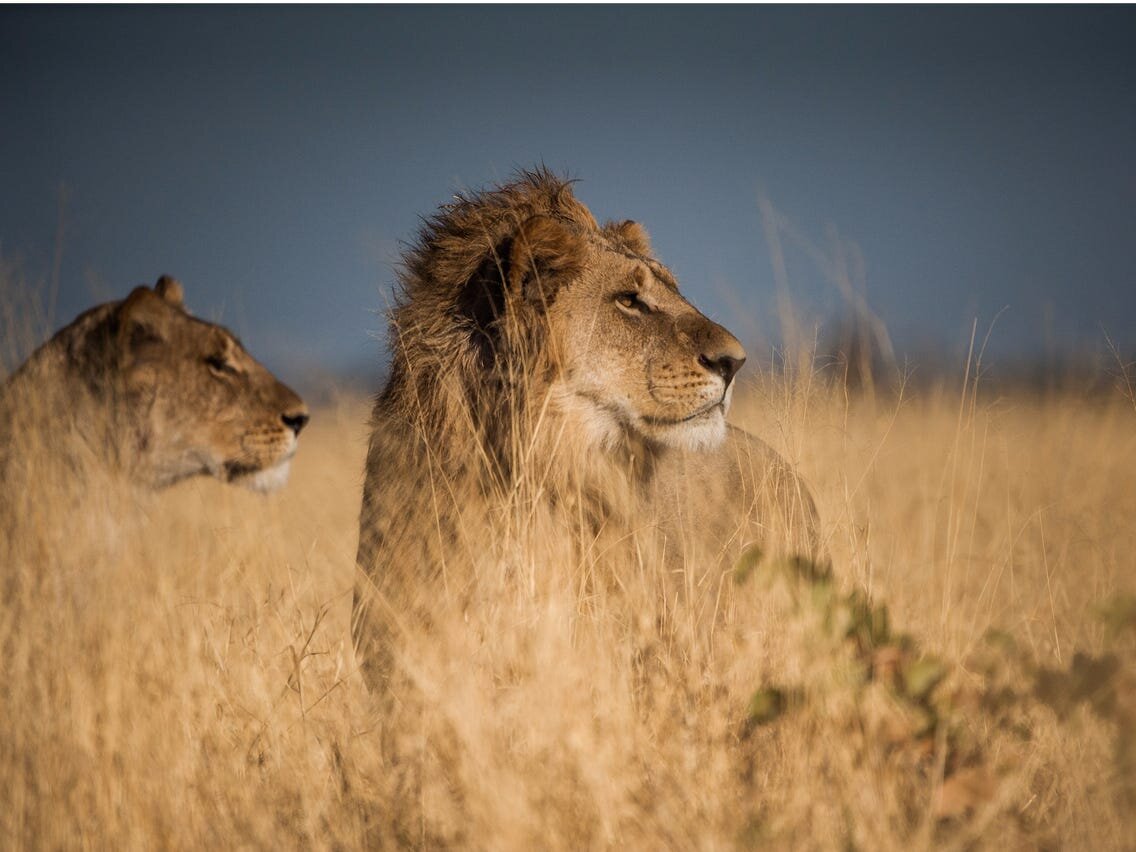New Page
New Page
Trophic ecology and diet in prehistory
Photo credit: Nat Geo WILD & NHFU Botswana
Although our understanding of paleodiet and herbivory has improved substantially over the last 40 years, there’s still a lot to learn about trophic ecology (e.g., predators and their prey) in the past, and how the evolution of our species impacted carnivore communities through competition for similar prey species and hunting. Traditionally, isotopic studies of trophic ecology have relied on nitrogen isotopes in organic tissues, limiting their application to the fossil record. New isotope systems that can be used in fossilized tissues, specifically calcium and magnesium isotopes, are paving the way for exploring trophic ecology and human diet, such as milk consumption, in the past. My group, along with our colleagues at the Pacific Centre for Isotopic and Geochemical Research and our international collaborators, is exploring these questions using novel isotopic systems to answer questions concerning meat consumption and hunting behaviour in early Homo in Africa (NSF Award #2039759), trophic shifts in diverse fossil mammals, and among different clades of carnivores in African ecosystems through time (NSERC Discovery Grant).
MAMMALIAN PALEOECOLOGY THROUGHOUT THE CENOZOIC
Early Cenozoic mammal skulls from Corral Bluffs, Colo. Photo Credit: HHMI Tangled Bank Studios and The New York Times
The world that we live in today has been shaped by the climatic and biotic evolution of mammals and the ecosystems they inhabit over the last 65 million years (Ma), the Cenozoic Era. During distinctive ups and downs in global climate, key reshuffling of mammal taxa have slowly shaped both organisms and their environments, and these ancient links between climate and evolution in the mammalian past can yield important clues about what may come next. Key areas of study include geochemical explorations of trophic restructuring among surviving mammals following the K-Pg mass extinction (NSF Frontier Research in Earth Science Grant #2317669), reconstructing and modelling Eocene climate as a guide for future change in North America, and understanding links between environmental change and African mammalian paleoecology from the Miocene onward.
Human dietary shifts and the transition to food production
Diet is the fundamental interface between people and their environments. Recent research has shown that heavy environmental modification started well before the Industrial Revolution, associated with early food production (see ArchaeoGLOBE Project, 2019 Science). This crucial moment in time when people transformed their economy from relying on wild resources to food production in the last 15,000 years is associated with direct and indirect large-scale environmental change, both natural (climatic changes) and anthropogenic (clear cutting, fertilization, burning, urbanization). The nuances of these changes in subsistence and economy are still being explored, and questions remain about the extent to which early food producers relied on products, like milk and meat, from domesticates, and how these shifts correspond to environment and human behavior (such as seasonal mobility). We are exploring these questions in African early herders using novel isotopic methods such as in situ laser ablation-IRMS and nontraditional isotopes, to understand these dietary shifts at the dawn of food production (NSF Award #2051494; NSERC Discovery Grant).
A cattle tooth from an early herding site in Kenya. Photo credit: K. Chritz
Mweya Peninsula, Uganda in 1974 (top) and 2006 (bottom) (Plumptre et al., 2010); see Chritz et al. 2016 Sci Rep
Smithsonian African Expedition, 1909 - 1910; Chritz et al., in review
Historical ecology and ENVIRONMENTAL change
Understanding accelerating rates of environmental change requires an ecological benchmark. These historical records can span decades or centuries, illuminating past landscapes and organismal behavior. These data are crucial for assessing rates of change in the recent past, and for assessing how animals cope with large scale anthropogenic perturbations, such as land use change, warfare, urbanization and increased industrial activities. My research group uses biological collections from across the globe to improve our understanding of the past and provide a marker for environmental change prior to the Great Acceleration (1950s - present) (NSERC Discovery Grant).
Salt Lake City, Utah, shrouded in smog, 1942
Green ash (Fraxinus pennsylvanica) cores from urban trees used for biogeochemical studies.
biogeochemistry of Anthropogenic landscapes
Exploring modern and ancient connections to human behavior and environmental pollution is of growing interest to researchers across many fields of study. Modern heavily modified landscapes pose environmental challenges to people and wildlife alike, specifically with air quality and pollution. Understanding how biogeochemical cycles and air pollution changes with growing urbanization is critical issue for human societies and the ecosystems we inhabit. Furthermore, we are now becoming increasingly aware of the concept of the exposome - that our ability to successfully live in built, polluted or highly urbanized landscapes may be tied to environmental hazards from our evolutionary past.






